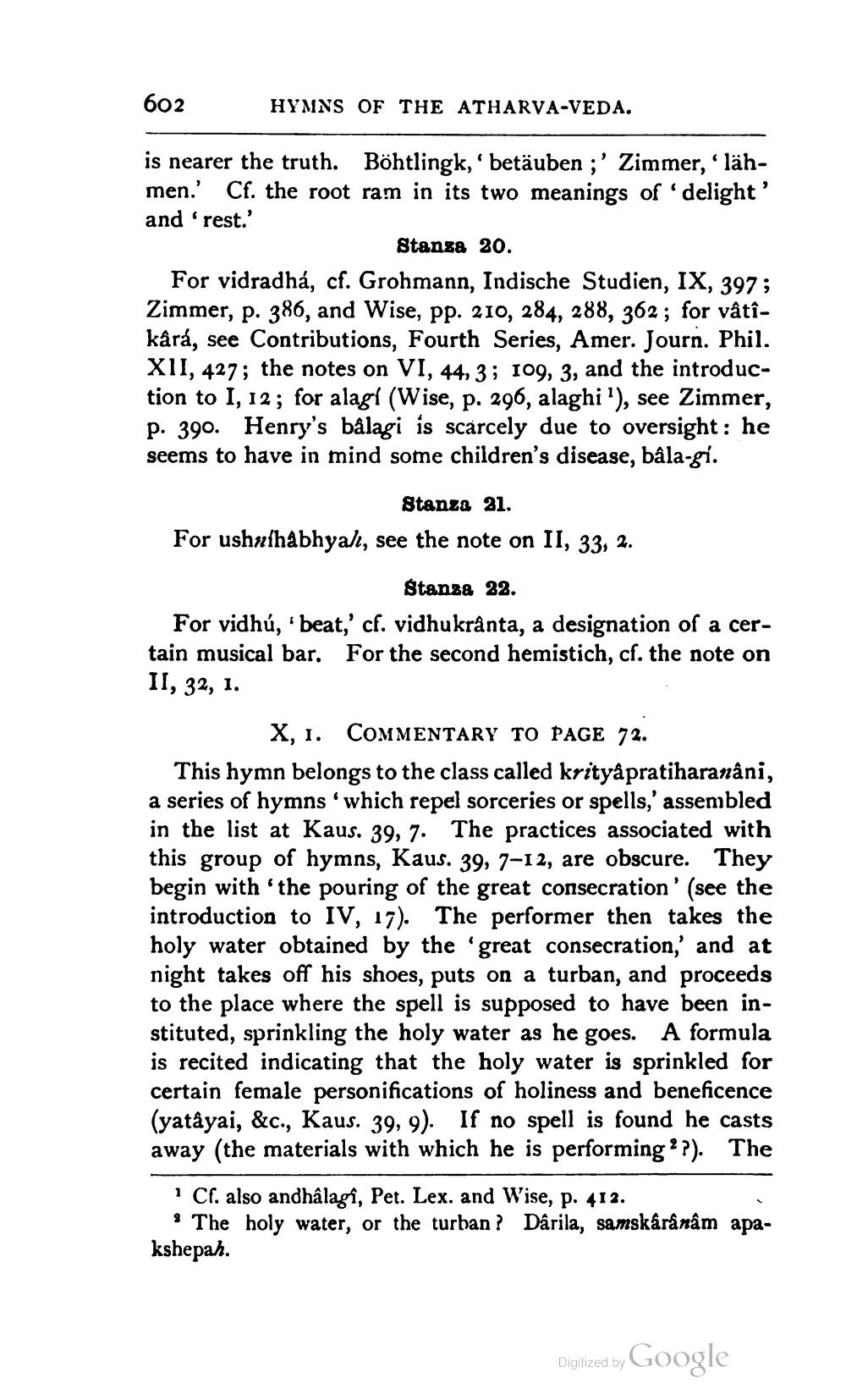________________
602
HYMNS OF THE ATHARVA-VEDA.
is nearer the truth. Böhtlingk,' betäuben;' Zimmer, 'lähmen.' Cf. the root ram in its two meanings of 'delight' and 'rest.'
Stanza 20.
For vidradhá, cf. Grohmann, Indische Studien, IX, 397; Zimmer, p. 386, and Wise, pp. 210, 284, 288, 362; for vâtîkârá, see Contributions, Fourth Series, Amer. Journ. Phil. XII, 427; the notes on VI, 44, 3; 109, 3, and the introduction to I, 12; for alagi (Wise, p. 296, alaghi 1), see Zimmer, p. 390. Henry's bâlagi is scarcely due to oversight: he seems to have in mind some children's disease, bâla-gi.
Stanza 21.
For ushahâbhyal, see the note on II, 33, 2.
Stanza 22.
For vidhú, 'beat,' cf. vidhukrânta, a designation of a certain musical bar. For the second hemistich, cf. the note on II, 32, 1.
X, I. COMMENTARY TO PAGE 72.
This hymn belongs to the class called krityâpratiharanâni, a series of hymns 'which repel sorceries or spells,' assembled in the list at Kaus. 39, 7. The practices associated with this group of hymns, Kaus. 39, 7-12, are obscure. They begin with 'the pouring of the great consecration' (see the introduction to IV, 17). The performer then takes the holy water obtained by the 'great consecration,' and at night takes off his shoes, puts on a turban, and proceeds to the place where the spell is supposed to have been instituted, sprinkling the holy water as he goes. A formula is recited indicating that the holy water is sprinkled for certain female personifications of holiness and beneficence (yatâyai, &c., Kaus. 39, 9). If no spell is found he casts away (the materials with which he is performing ??). The
1 Cf. also andhâlagî, Pet. Lex. and Wise, p. 412.
The holy water, or the turban? Dârila, samskârânâm apakshepah.
Digitized by
Google




